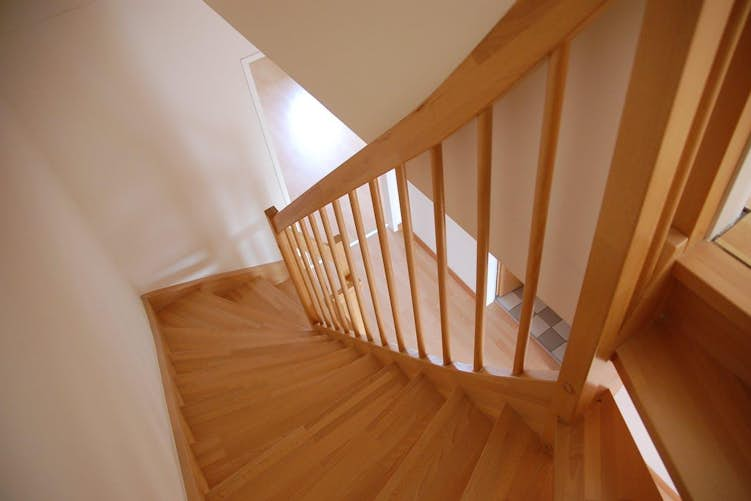Whether you're a senior seeking ways to enhance your daily life or a caregiver assisting a loved one, knowing if Medicare covers stairlifts can pave the way to a safer, more accessible home.
Will Medicare pay for my stairlift?
In most cases, unfortunately not. Medicare's coverage primarily focuses on medical services and equipment considered medically necessary, excluding coverage for most home modifications, including stairlifts.
Medicare does not cover stair lifts since it considers them home modifications, not Durable Medical Equipment (DME). Similarly, Medigap (a type of medicare supplement insurance) will not cover stairlifts since they pay only the remaining costs of Medicare-covered expenses.
However, there are a few instances where some form of Medicare may cover the cost of a stair lift, such as through select Medicare Advantage plans.
How can I get a stairlift through Medicare?
While Medicare doesn't cover the cost of stairlifts directly, there are ways to potentially obtain coverage as a beneficiary.
Some Medicare Advantage Plans (Part C) offer additional benefits beyond Original Medicare. Private insurance companies offer these plans and may cover stairlifts as part of their extra benefits. However, you should note that coverage for the installation costs of stairlifts is typically not a standard benefit under Medicare Advantage Plans. Check with your insurance provider to see if this option is available to you.
Your physician should write a detailed letter explaining why a stairlift is medically necessary for you. This documentation should include information about your health condition, mobility limitations, and how a stairlift would improve your quality of life.
Are there any alternative funding options?
Beyond Medicare, there are some exceptions and alternative funding options for you to explore:
- Medicaid: Medicaid is a state and federally-funded program that provides healthcare coverage if you are on a low income. Depending on your state programs, you may find assistance for home modifications, including stairlifts.
- HCBS: HCBS (Home and Community-Based Services) is a Medicaid program that provides a wide range of long-term care services and support to people with disabilities and older adults who wish to receive care in their homes and communities rather than in institutional settings like nursing homes or hospitals. HCBS services can include personal care assistance, home health services, assistive technology such as stairlifts and ramps, and more.
- Veterans Administration (VA) benefits: If you or your spouse is a veteran, you may be eligible for VA benefits that can help cover the cost of a stairlift. The VA offers various programs and financial assistance grants to assist veterans with disabilities.
- Private insurance: Some private insurance plans, particularly those tailored to seniors or individuals with disabilities, may offer coverage for stairlifts or home modifications. Reviewing your policy and consulting with your insurer to explore this option is essential.
Understanding Medicare
Before diving into stairlift coverage, let's grasp the basics of Medicare. Medicare (medicare.gov) is an American federal health insurance program primarily for individuals 65 and older. It also extends coverage to certain younger people with disabilities.
Medicare splits its plans into four main parts including:
- Part A covers hospital stays and care services.
- Part B includes outpatient care and doctor services with a monthly fee.
- Part C combines A and B benefits, often including extras like dental and vision.
- Part D is a separate plan for prescription costs with a monthly premium.
When should I consider a stairlift?
If you find it difficult to navigate stairs safely or experience discomfort, a stairlift can provide a convenient solution. Installing a stairlift can enhance your independence and quality of life, allowing you to move between different levels of your home with ease and without the risk of falls or strain.
It's a practical consideration if you or a loved one are facing mobility challenges that impact your ability to use stairs comfortably.
How do I choose the best stairlift for me?
First and foremost, take the time to assess your specific mobility challenges. Determine the nature of your needs and the layout of your staircase to identify the most suitable type of stairlift for your situation based on your needs and staircase layout. Options range from straight stairlifts to round models for curved staircases. You can tailor this type of assistive technology to your own home’s unique space.
You should also establish a clear budget for your stairlift purchase. Stairlifts come in various price ranges, so having a budget and exploring financing options is essential. Keep in mind that while cost is a factor, the safety and independence that a stairlift can provide are truly invaluable.
When choosing the right stairlift, research and select a reputable supplier or provider. Read through customer reviews, request quotes, and seek referrals to ensure you select a stairlift from a trusted company that can meet your specific needs and provide the support and service you deserve.
Embracing mobility with stairlifts
While Medicare plans typically do not cover stairlifts, there are alternative funding options and steps you can take to potentially obtain coverage.
Stairlifts are essential for maintaining independence and safety at home, so don't hesitate to explore your options and work with your healthcare provider and licensed insurance agent to meet your needs. Your well-being and quality of life are worth the effort.
Image Credit: Pixabay at Pexels



